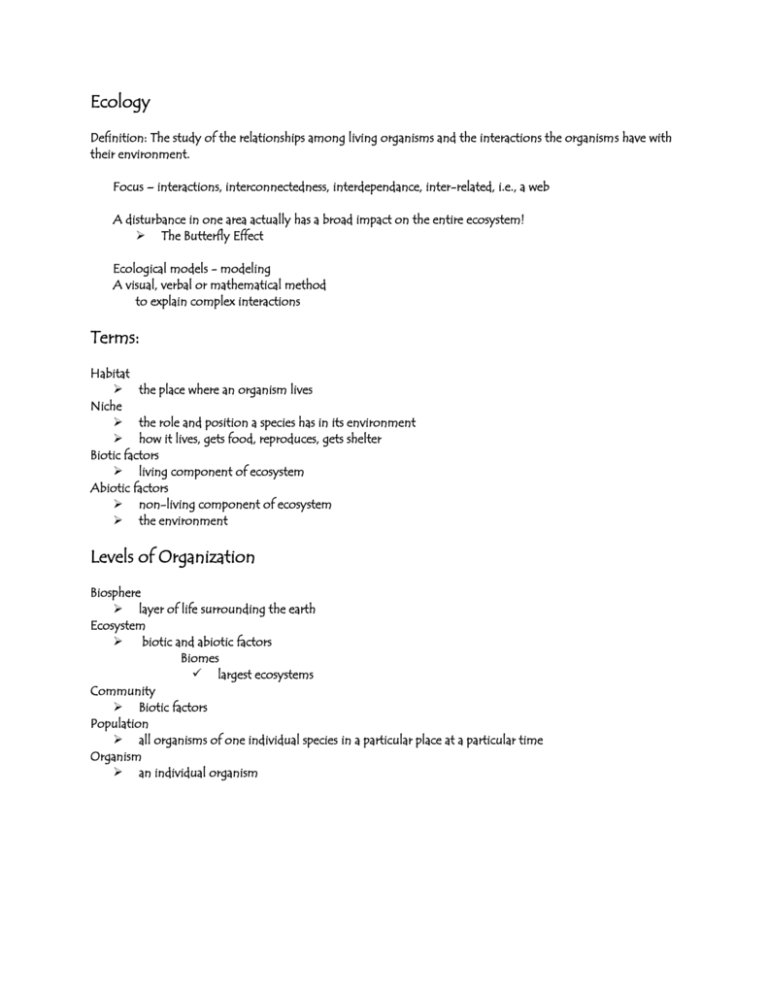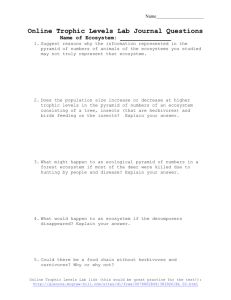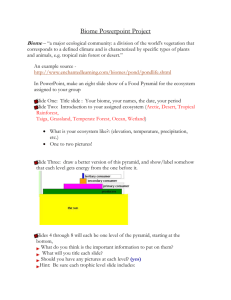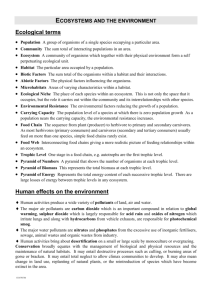Introduction to Ecology
advertisement

Ecology Definition: The study of the relationships among living organisms and the interactions the organisms have with their environment. Focus – interactions, interconnectedness, interdependance, inter-related, i.e., a web A disturbance in one area actually has a broad impact on the entire ecosystem! The Butterfly Effect Ecological models - modeling A visual, verbal or mathematical method to explain complex interactions Terms: Habitat the place where an organism lives Niche the role and position a species has in its environment how it lives, gets food, reproduces, gets shelter Biotic factors living component of ecosystem Abiotic factors non-living component of ecosystem the environment Levels of Organization Biosphere layer of life surrounding the earth Ecosystem biotic and abiotic factors Biomes largest ecosystems Community Biotic factors Population all organisms of one individual species in a particular place at a particular time Organism an individual organism Species Interactions Symbiotic Relationships (Symbiosis) Predation – Predator-Prey Interactions Mimicry Cryptic Coloration – Camouflage Warning Coloration Plant-Herbivore Interactions, e.g., secondary compounds Parasitism – Ecto, Endo Competition Mutualism Commensalism Energy Producers – autotrophs photosynthesis, chemosynthesis Consumers - heterotrophs Herbivores Carnivores Omnivores Insectivores Scavengers Detritivores Decomposers, saprophytes Energy Flow Trophic Levels 1st trophic level – producers 2nd trophic level – herbivores 3rd trophic level – 1st order carnivores 4th trophic level – 2nd order carnivores 5th trophic level – scavengers and detritivores Food Chain – single pathway of feeding relationships Food Web – complex interactions of many food chains Energy Flow Ecological Pyramids Pyramid of Numbers Pyramid of Biomass Pyramid of Energy Quantity – 10% rule – 10% of energy at one trophic level is transferred to the next trophic level Range: 20% to 1%, e.g., Isle Royale: moose wolf, 1.3% Short food chains/pyramids are more efficient! Ecosystem Recycling – Nutrient Cycling Biogeochemical Cycles The Water Cycle Ground water, transpiration The Carbon Cycle The Nitrogen Cycle Nitrogen fixation - nitrogen-fixing bacteria Recycling nitrogen Ammonification Nitrification Denitrification The Phosphorus Cycle








